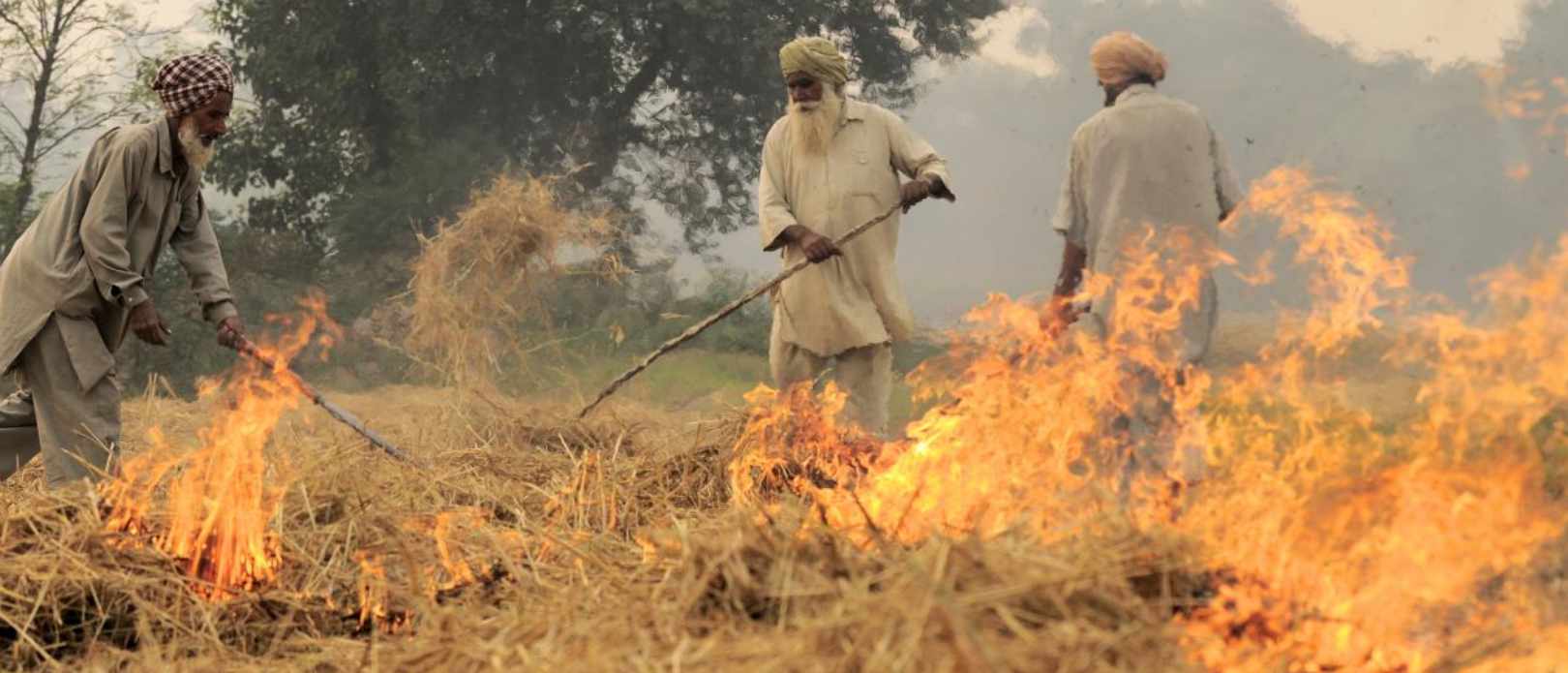INDIAN AGRICULTURE
Why crop-residue burning is part of a bigger problem
Burning in northern India affects millions of people across South Asia. But the farmers doing it are stuck in a vicious cycle
- For farmers in Punjab, burning remains the fastest and cheapest way of clearing wheat and rice stubble
- Policies and subsidies constrain farming practices and tightens farmer dependence on rice and wheat production
- The central government is the biggest investor in Punjab’s rice and wheat value chains
A BURNING ISSUE: The government of India and a handful of powerful investors can and must do more to promote alternatives to the harmful practice of crop residue burning in the northern state of Punjab.
To put the onus on the individual farmers is ineffective, because burning is a response to a problem more than the problem itself. But the national and state governments, as well as financial institutions, have the means to change this.
This is the conclusion from a study recently published in Ecological Economics by centre researcher Andrea Downing and colleagues from Sweden and the UK.
Unlocking the unsustainable dynamics of Punjab’s agricultural system will require ‘doing less harm’ by curbing unsustainable practices, and ‘doing good’ by promoting solutions where residue burning is no longer an option.
Andrea Downing, lead author
Fastest and cheapest way
Dubbed the granary of India, Punjab hosts India’s most intensive, large-scale agriculture production. But as thousands of farmers in North India clear their fields of residue by burning, it significantly adds to Atmospheric Brown Cloud which affects millions of people across South Asia, as well as the global climate system.
For farmers in Punjab, burning remains the fastest and cheapest way of clearing wheat and rice stubble. This is because of a system of policies and subsidies that constrain farming practices and tightens farmer dependence on rice and wheat production.
When the central government attempted to change the policies and subsidies in 2020, it was met with disruptive and sometimes violent farmer protests, forcing the government to repeal these laws. New machines and crop diversification are potential ‘win-win’ alternatives to burning, but the cost of change is seen as a burden on farmers alone.
Rice and wheat production in Punjab is central to farmer livelihoods and to national food security: changes to the system need to maintain those central roles.
So what is the way out of the deadlock?
Set new standards
According to Downing and her colleagues, investors and financial institutions can play a part. The central government is the biggest investor in Punjab’s rice and wheat value chains.
Major investment companies such as Blackrock and Vanguard Inc could also lead the way at low risks and impact to themselves.
Setting conditions on loans and investments, as well as supporting farmers and fostering opportunities for entrepreneurs to create new sustainable pathways in the system could lead to more equitable outcomes.
“Unlocking the unsustainable dynamics of Punjab’s agricultural system will require ‘doing less harm’ by curbing unsustainable practices, and ‘doing good’ by promoting solutions where residue burning is no longer an option,” says Downing.
Downing, A., Kumar, M., Andersson, A., Causevic, A., Gustafsson, Ö., Joshi, N.U., Krishnamurthy, C.K.B., Scholtens, B., Crona. B. 2022. Unlocking the unsustainable rice-wheat system of Indian Punjab: Assessing alternatives to crop-residue burning from a systems perspective. Ecological Economics Volume 195, May 2022, 107364, https://doi.org/10.1016/j.ecolecon.2022.107364







